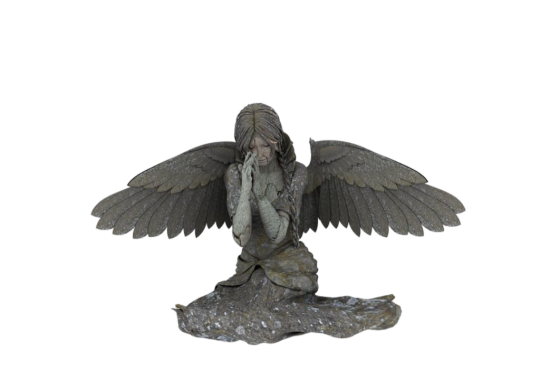#Identity V Richard Sterling
Explore tagged Tumblr posts
Note
richard sterling pngs and/or theme'd stuff? ^_^














& knight pngs
#richard sterling#idv resources#idv#identity v#idv richard#identity v richard sterling#rentry resources#request#rentry#editblr#pngs#themed resources#frames
23 notes
·
View notes
Text
forgot to post (who would have thought...)

353 notes
·
View notes
Text


Knight 🗡️ ( #identityV )
.
.
.
(SECOND SLIDE) is a DT interaction with Richard, cause damn I think he suits my universe of idv well 🏃🏃✨
so yeah--- I knew I had to draw him the first time I saw him 😭✨👌
have you seen the PV of the new characters for the next season-!? everyone is hella gorgeous especially mister knight over here 🏃🏃🏃
I dashed my way into my canvas real quick-- 🤸🤸🤸
a new idv posting ya all-- I feel bad I haven't drawn Florian yet so I probably would do so anytime soon-- but for now- I'm sensing this isn't the end of me and Richard 👁️👁️👌✨
that's all I'm sorry it's rushed so my lineart is a little funky 🏃 gotta go back to my wips 🤸
( DO NOT REPOST USE TRACE PRINT MY WORK / DO NOT REPOST WITHOUT PERMISSION)
#YueArt
#yueart#fanart#illustration#digitalart#identity v comic#identity v richard sterling#identity v knight#idv knight#idv richard#idv richard sterling#idv survivor#第五人格#第五人格イラスト#騎士#Richard Sterling#identityVFanart#idv fanart#comic#digital art#identityVイラスト
182 notes
·
View notes
Text
Richard Sterling/"Knight" headcanons
Theres a chance he'll get mischaracterized.
-Since he's a fraud, he usually change his handwriting (both, left or right)
-Would've push someone (Yk the trailer where he pushed his "sister"), I feel like he'll do other methods to silence other people who realized Richard is a fraud (e.g: Poisoning others) (Yes this is Dio Brando reference)
-Richard hates being caught.
-Richard would've take Luca Balsa's severe memory problems an advantage (Luca's brain is fucked up).
-Vera is remorseful while Richard isn't.
-If you confront him why would've he made his sister got pushed down, only he'll say "Not my problem, thats just your problem, problem, problem thats just your problem"
-Richard gives me Oswald vibes from Murder in Alps (murdering his cousin to inherit) if you didn't play Murder in Alps so basically spoilers!!
Oswald killed his cousin Aldo was because of inheritance (Oswlad's mom MARRIED a man something his dad didn't want)
-He smirks when his plan works but grits his teeth when others finding out.
#headcanons#imagines#x reader#Richard Sterling x reader#Knight x reader#IDV#Identity V#Identity V Richard Sterling#Vera Nair
87 notes
·
View notes
Text

ughhhhuyguhghhh i love them i hate them i love you toxic yaoi
#richard sterling#art#oc#fanart#my art#my oc#idv#idv oc#identity v#identity v oc#identity v ocs#idv ocs#richard idv#idv richard#identity v richard#identity v richard sterling#jester#jester oc#dark art#yumeship#idv oc x canon#oc x canon#toxic ship#toxic yaoi#eyestrain tw#eyestrain cw#eyestrain art#eyestrain#eye strain
31 notes
·
View notes
Text


Well, I think I should start this blog with one of my recent drawings of Richard and Bane, because I use them as avatar and banner.
I haven't been on social media for a long time, so for now I'll try posting old and new drawings.
I hope you like it and I will stay here for as long as possible.
#identity v#idv fanart#the knight#idv knight#idv gamekeeper#idv bane#idv richard#identity v richard sterling#richard sterling
27 notes
·
View notes
Text
I feel like "Knight" is the type to mock Night Watch by saying his mother deserved what happened to her...
25 notes
·
View notes
Text

Richard Sterling please don't bankrupt me like Ithaqua did. I can't go to hard pity again i just Can't
#richard sterling#knight#identity v#idv#knight idv#richard idv#idv fanart#identity v fanart#identity v richard sterling#identity v knight#fanart
46 notes
·
View notes
Text

#identity v#art#identity v art#identity v fanart#richard sterling#identity v “knight”#identity v knight#idv knight#idv richard#idv richard sterling#identity v richard sterling#identity v richard#lethal face card#i swear
32 notes
·
View notes
Text
You know, I feel like they could have made something more interesting with Richard’s/Knight’s S tier skin tbh. I don’t mind if ppl love it, it’s just not for me.
The more devilish or vampiric red colored and royal vibe has been done in previous essences with other characters. So personally, they could have done smth more unique.
At first I thought of his skin being based if a black knight chess piece. But the I realized the whole game chess piece as for inspo for an essence has already been done
And the I tough, what about a dark fae court and a fae court (or like a seelie and unseelie court)?!? Richard being a dark gothic fae would fit so well!!!
I mean, fae are known for being tricksters, stealing names, being proud and mischievous fuckers. That is legit Richard’s whole vibe. Also he literally stoles someone’s name and identity.
Tho tbh I do rrly like Ada’s and Emil’s A skins for the essence, they are the definition of girlboss and malewife
As for how I would imagine him visually? Idk his knight cape could be an insect wing! And his ither wing got torn off! His helmet could be some sort of tiara or crown??? Some parts of his body fade to black, covered in wiltering flowers or gothic flowers, give him elf ears, one of his eyes could be replaced with some flower that is part and spreads through his body? Or it glows like a shiny crystal?? His effects could that be of flower petals or leaves and/or butterflies. Maybe give him a black, silver and cold color palette
#idv#identity v#idv knight#knight idv#identity v knight#knight identity v#richard idv#richard sterling#idv richard#idv richard sterling#identity v richard sterling
10 notes
·
View notes
Text
Messy as hell but uh. Here take this

#shadey speaks#idv#idv fanart#idv richard#idv knight#Richard sterling#identity v richard sterling#is this how I tag
7 notes
·
View notes
Text
IDV Incorrect Quotes #2 Distracted
Elvire entering the tea room, to meet up with Zora, her lip paint is a bit smudged and her clothes a bit rumple
Elvire: Sorry I'm late, I was doing stuff and got distracted.
The pretty boys pokeing their heads in to embarrass her
Orpheus: I'm stuff! Richard: I'm got distracted! Norton: We had sex.
Elvire red face immediately turns and slams the door close in their faces but looking back at her sister
Zora: takes a sip of tea before sitting down on it platter then makes direct eye contact with her sister and giving her the thumbs up
Zora: "nice"

Sister gotta tease sister
#identity v#Identity V x oc#Identity v Incorrect quotes#identity v ocs#Identity v Elvire Hayes#identity v richard sterling#identity v norton#identity v orpheus#identity v Zora Hayes
1 note
·
View note
Text

"knight"
#art#my art#identity v#idv#idv fanart#richard sterling#idv knight#identity v fanart#tw bugs#tw insects#bugs#insects#worms
3K notes
·
View notes
Text



started playing rank for the first time today (im washed)
#art#doodle#identity v#idv#alice deross#frederick kreiburg#norton campbell#orpheus deross#richard sterling#melly plinius#wip
2K notes
·
View notes
Text

IDV DEVS, YOU CANNOT DO THIS TO ME- WHYS THE KNIGHT'S SO FUCKING HANDSOME 😭😭😭😭😭😭🙏🙏🙏🙏🙏🙏🙏 DESPITE HES EVILLLLLLLLLL
#IDV Richard Sterling#IDV Knight#Identity V#Identity V Richard Sterling#Identity V Knight#Identity V x reader#Identity V headcanona#IDV#Hear me out....#WHY DID THEY HAVE DO THIS TO ME-
25 notes
·
View notes
Text

i don’t wanna draw this one anymore here you go
#richard sterling#idv#fanart#art#identity v#identity v fanart#identity v art#identity v knight#identity v richard sterling#identity v richard#idv richard#richard idv#idv knight#identity v survivor
26 notes
·
View notes